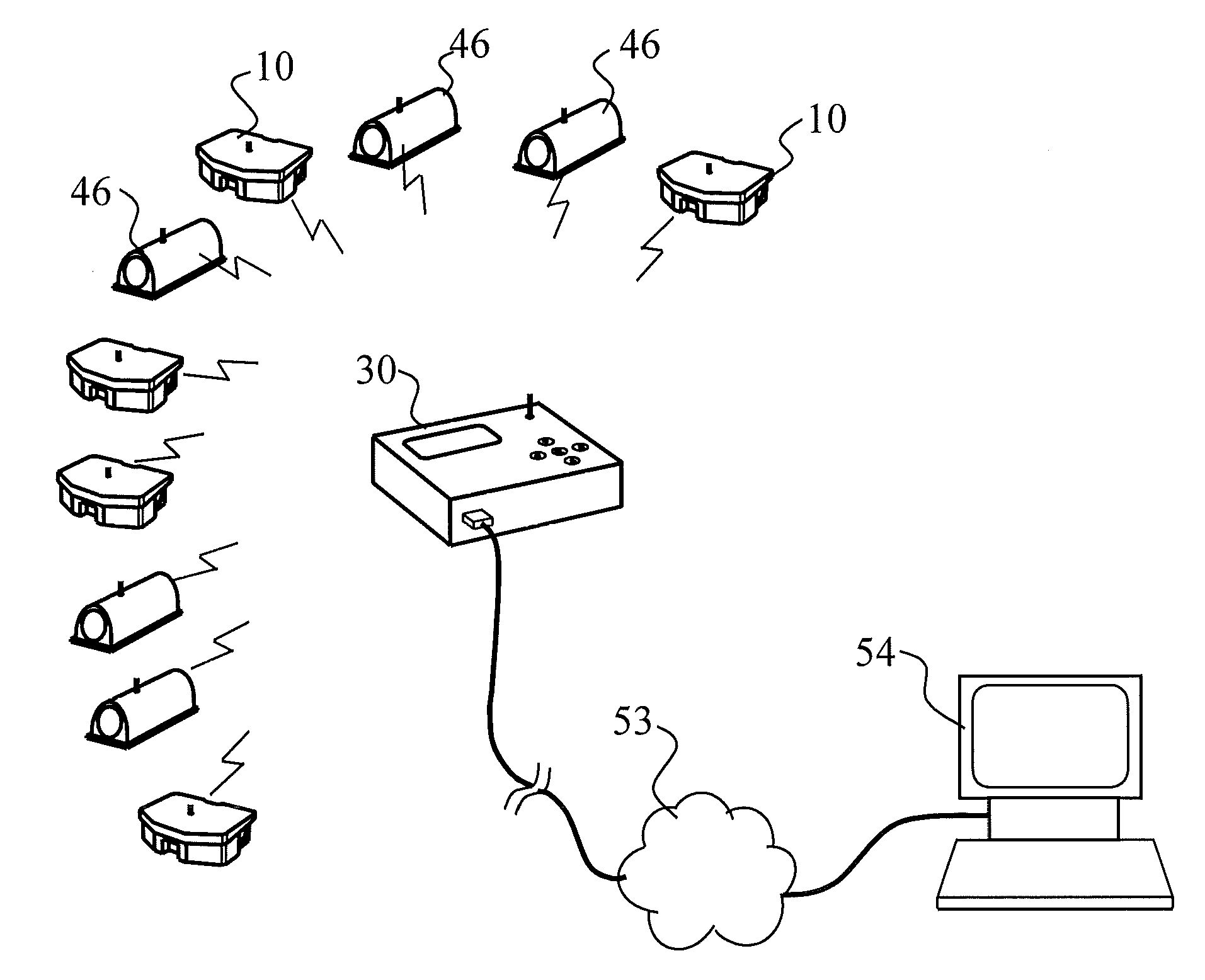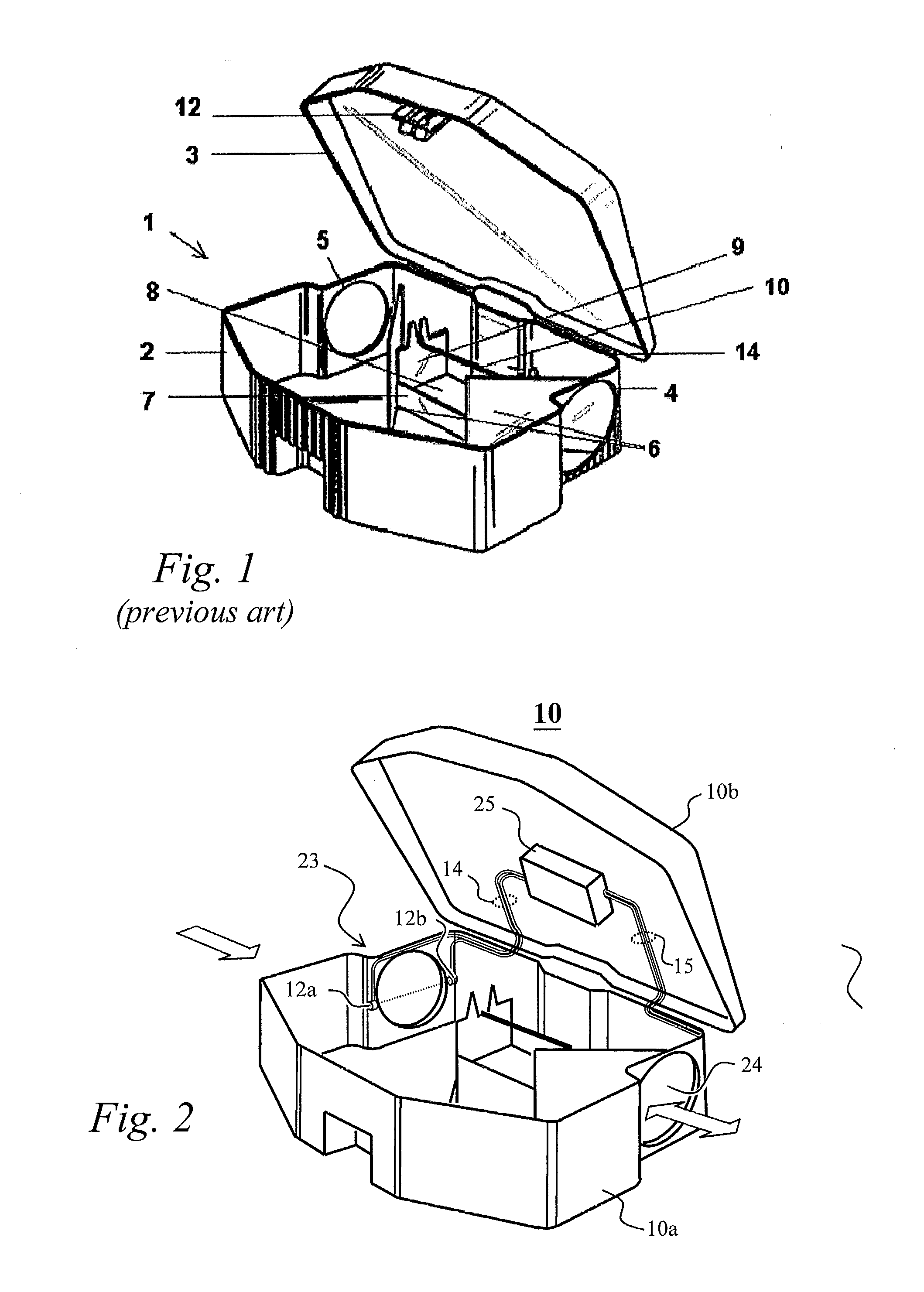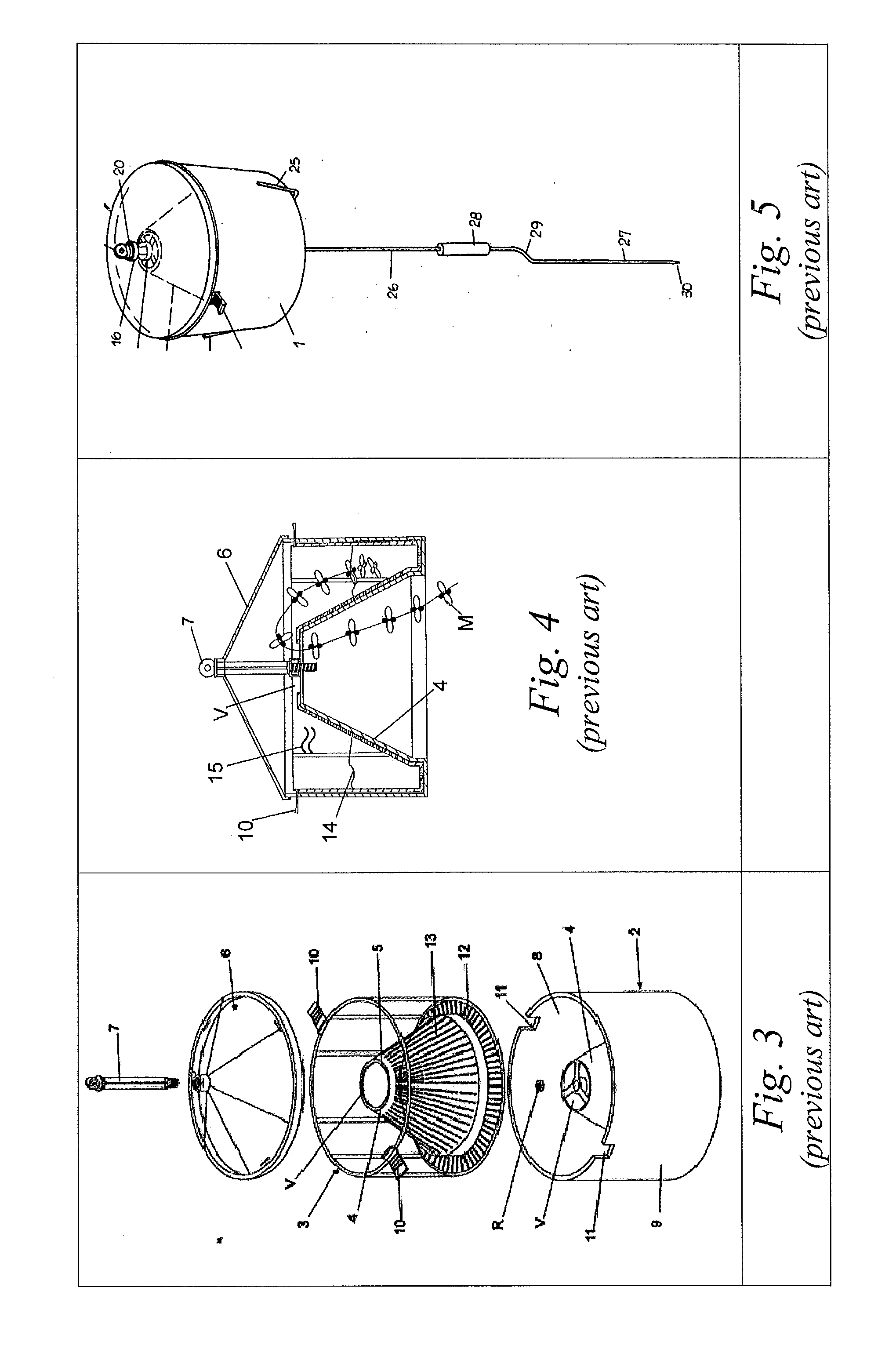Method and system for controlling and eliminating pests
a technology for pests and pests, applied in the field of pest control, can solve the problems of pest infestation, weighing loss, loss, etc., and achieve the effect of reliable estimation and waste of human resources
- Summary
- Abstract
- Description
- Claims
- Application Information
AI Technical Summary
Benefits of technology
Problems solved by technology
Method used
Image
Examples
Embodiment Construction
[0052]Referring now to FIGS. 2, 6 and 7, slave unit 10 is set up in a commercially available plastic enclosure consisting of a lower body 10a and a lid 10b. Although the figures show a specific enclosure, any other commercially available case may be used, as long as it is provided with two openings 23 and 24 for entry end exit of the rodent. As shown in FIG. 2, opening 23 is provided with an infrared sensing device comprising an infrared emitting diode 12a and a detector 12b which are connected by a pair of wires 14 to a controlling device 25 fastened to the internal surface of lid 10b. A similar sensing assembly (not shown in the drawing) is placed in opening 24 and is connected to the same controlling device by means of wires 15. A state of the art processor 11 in said controlling device 25 manages the events related to the entry and exit of a rodent through said openings.
[0053]As shown in block diagram of FIG. 7, the electronic components of the slave unit are powered by power su...
PUM
 Login to View More
Login to View More Abstract
Description
Claims
Application Information
 Login to View More
Login to View More - R&D
- Intellectual Property
- Life Sciences
- Materials
- Tech Scout
- Unparalleled Data Quality
- Higher Quality Content
- 60% Fewer Hallucinations
Browse by: Latest US Patents, China's latest patents, Technical Efficacy Thesaurus, Application Domain, Technology Topic, Popular Technical Reports.
© 2025 PatSnap. All rights reserved.Legal|Privacy policy|Modern Slavery Act Transparency Statement|Sitemap|About US| Contact US: help@patsnap.com



